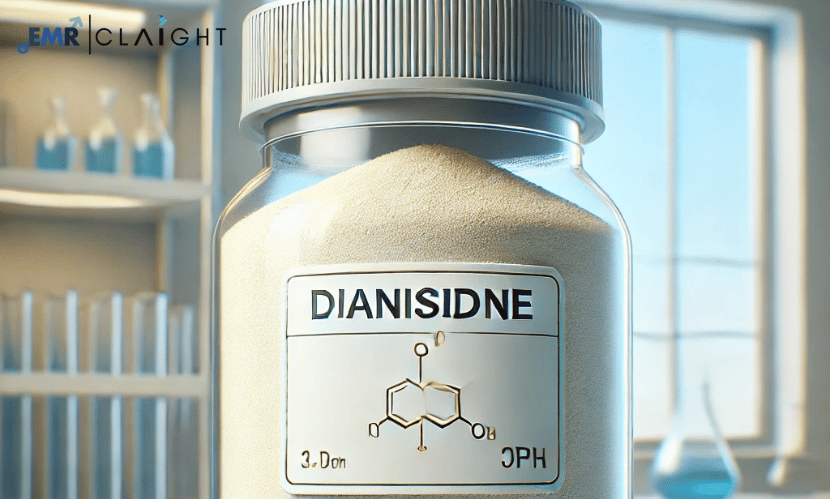Dianisidine is a critical organic compound used across various industries, including dyes, pigments, and chemical synthesis. Its role in producing high-performance materials makes it an essential component in multiple applications. The growing demand for specialized chemicals has led to increased interest in Dianisidine manufacturing. Setting up a manufacturing plant requires a deep understanding of market trends, production processes, and business opportunities. This report provides a detailed analysis of the Dianisidine industry, covering market size, trends, growth potential, and challenges.
Understanding Dianisidine Manufacturing: An Overview
Dianisidine is widely used in the dye and pigment industry due to its ability to produce vibrant and long-lasting colors. It is also utilized in the development of chemical intermediates for pharmaceutical and industrial applications. The manufacturing process involves controlled synthesis and stringent quality control measures to ensure high purity and stability.
Get a Free Sample Report with Table of Contents@ https://www.expertmarketresearch.com/prefeasibility-reports/dianisidine-manufacturing-plant-project-report/requestsample
Market Size & Industry Share: A Growing Sector
The market for Dianisidine is expanding due to increasing demand from various industrial applications. Key market players are investing in research and innovation to enhance production efficiency and develop eco-friendly alternatives. The industry’s growth is further supported by rising investments in specialty chemicals and advanced material formulations.
Key Market Trends Shaping the Industry
1. Rising Demand for High-Performance Dyes and Pigments
With the growing textile and printing industries, the need for high-quality dyes and pigments continues to rise. Dianisidine plays a crucial role in producing durable and vibrant colorants.
2. Expanding Applications in Chemical Synthesis
Dianisidine is a fundamental component in synthesizing various chemical intermediates, making it indispensable for pharmaceutical and industrial applications.
3. Focus on Sustainable and Eco-Friendly Production
Regulatory changes are pushing manufacturers toward sustainable practices, leading to the adoption of greener production processes and alternative raw materials.
Growth Potential: Business Expansion Opportunities
1. Innovation in Dye and Pigment Production
New formulations and advanced manufacturing technologies are driving the development of more efficient and cost-effective dye products.
2. Increasing Demand in Developing Markets
Emerging economies are witnessing an increase in industrial activities, driving the demand for high-performance chemical intermediates like Dianisidine.
3. Strategic Collaborations and Research Investments
Partnerships with research institutions and industry leaders can open up new opportunities for product development and market expansion.
Challenges & Risks in the Market
1. Regulatory Compliance and Safety Standards
The chemical industry is highly regulated, requiring strict adherence to environmental and safety guidelines, impacting production and operational costs.
2. Supply Chain Disruptions and Raw Material Costs
Fluctuations in raw material availability and pricing can affect the profitability and stability of Dianisidine manufacturing.
3. Competition from Alternative Chemical Intermediates
As research advances, alternative compounds are being developed, posing a challenge for Dianisidine manufacturers to maintain market dominance.
Future Outlook & Industry Projections
The Dianisidine industry is set for continued growth, driven by increasing demand in dyes, pigments, and chemical synthesis applications. Companies that focus on sustainability, regulatory compliance, and technological advancements will maintain a competitive edge. As industries evolve and require more specialized chemicals, the market for Dianisidine is expected to offer significant growth potential for investors and manufacturers.









